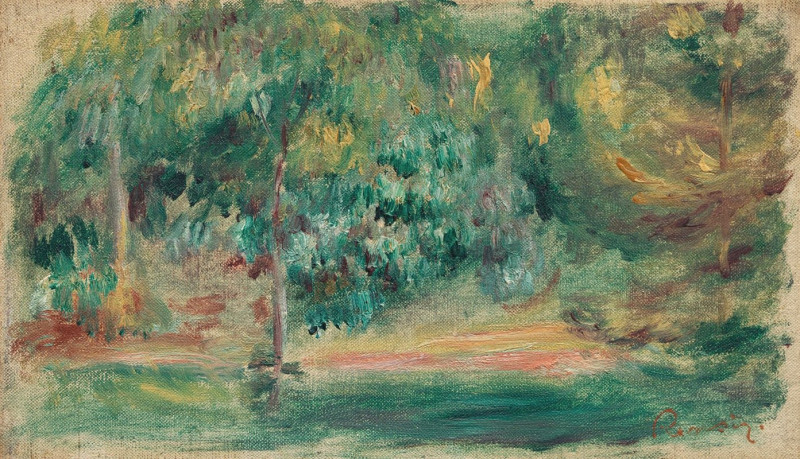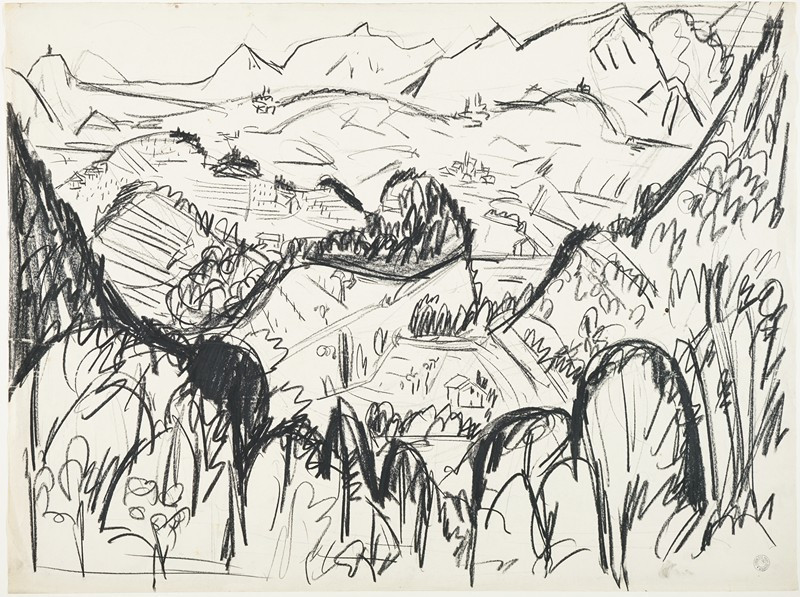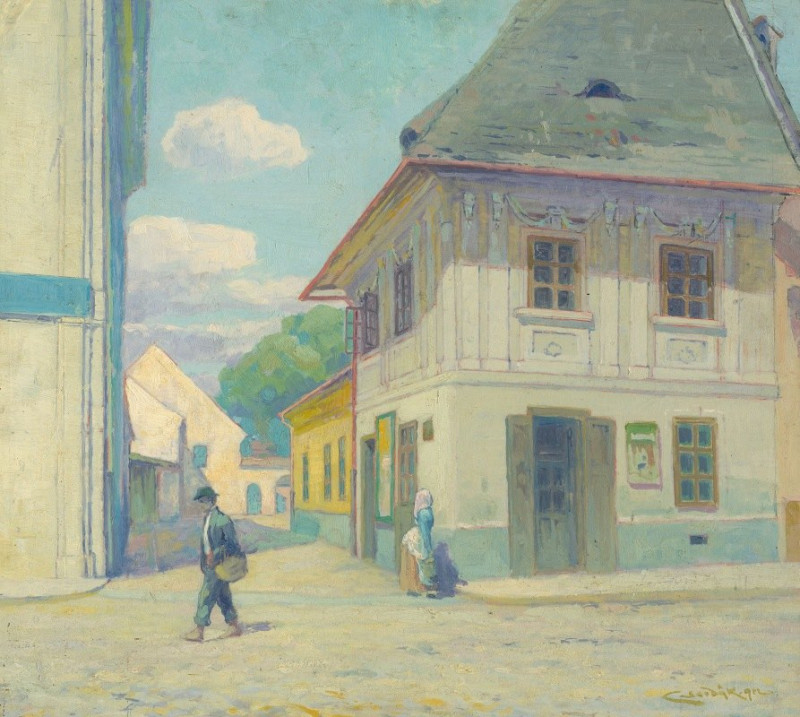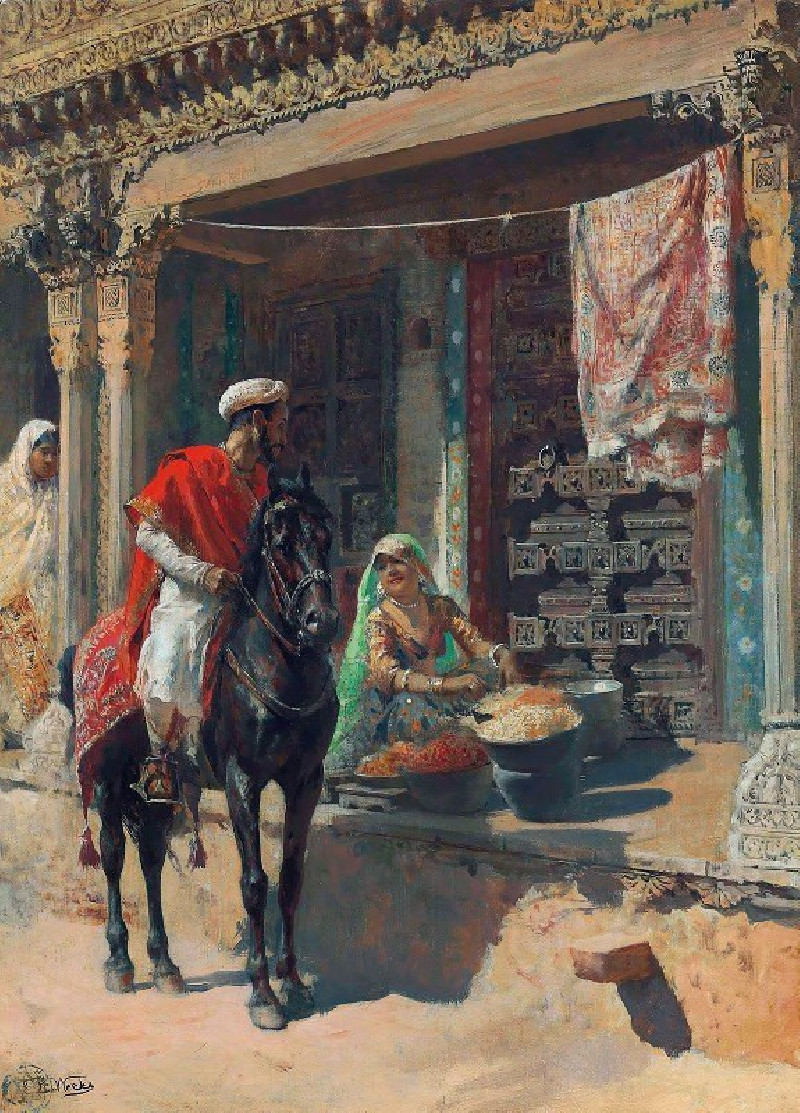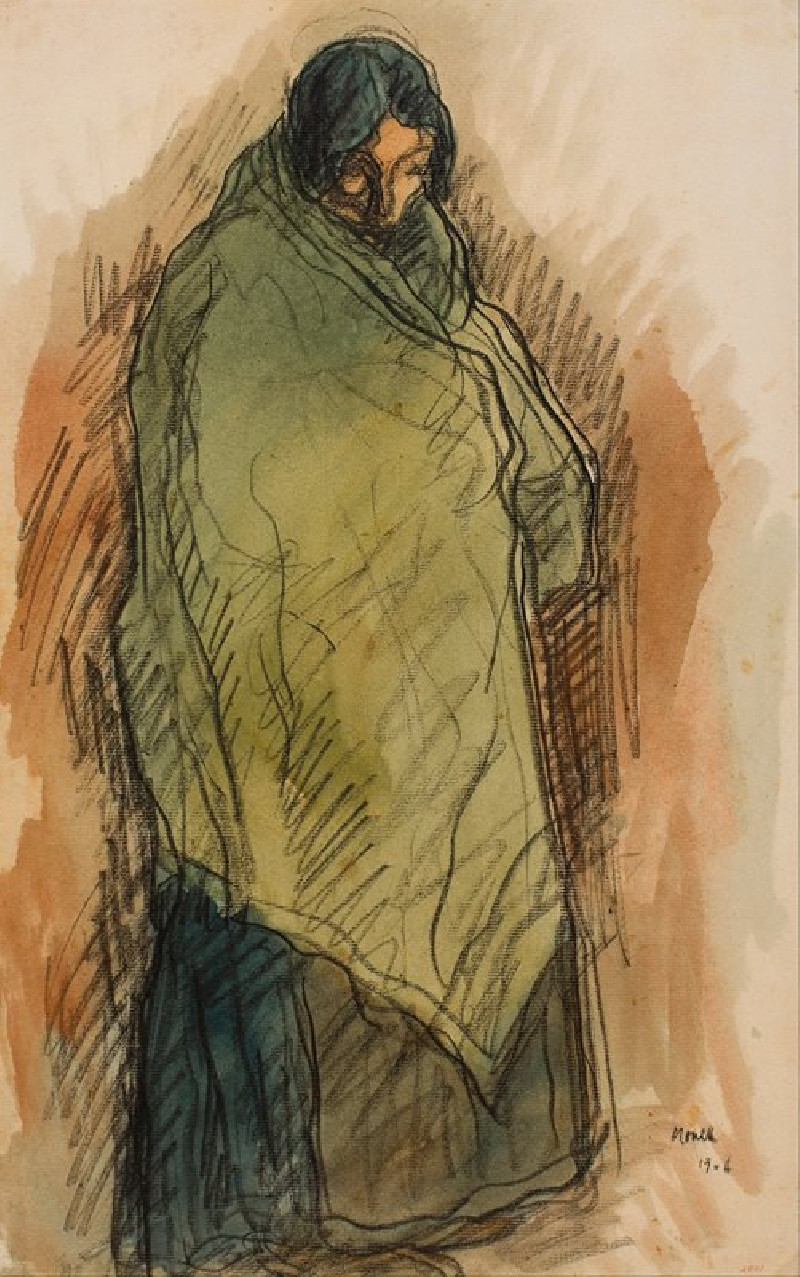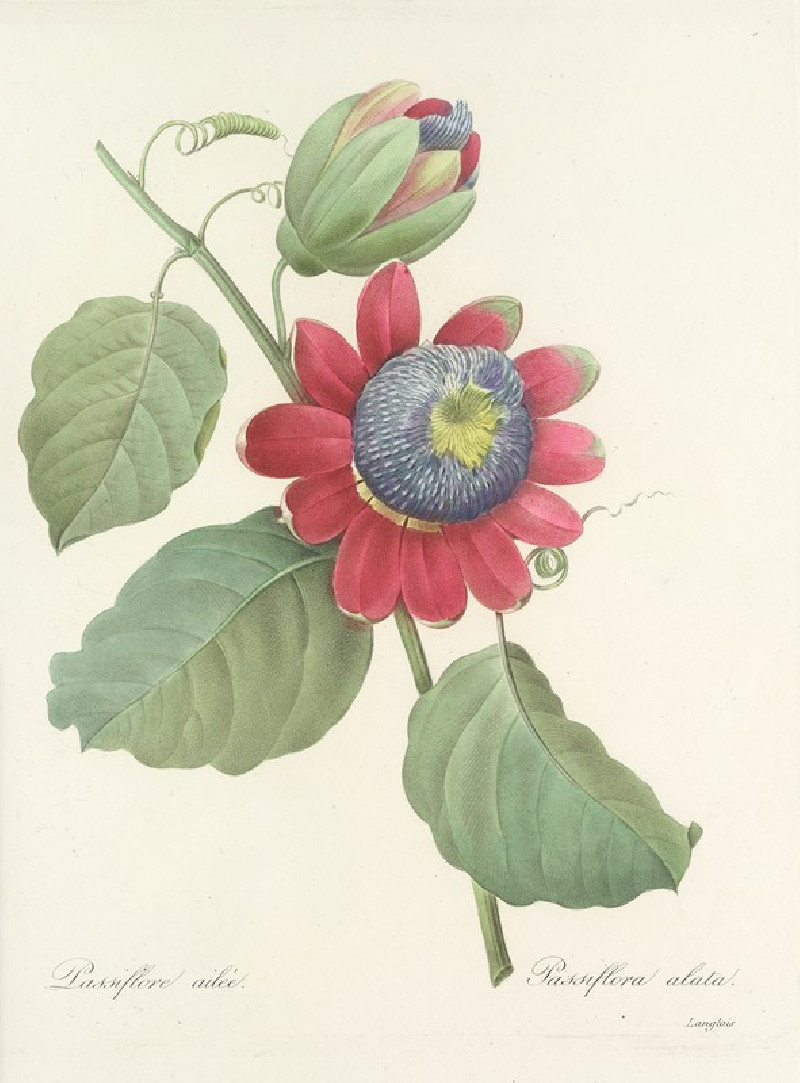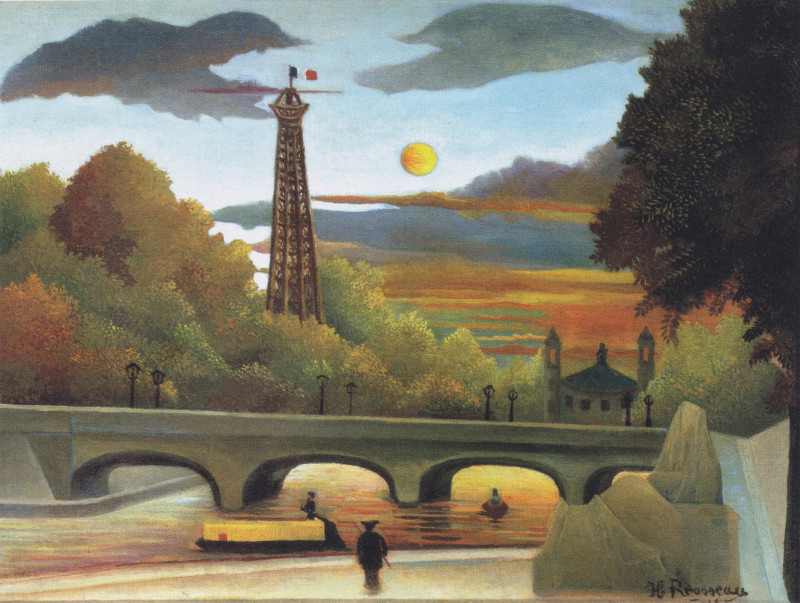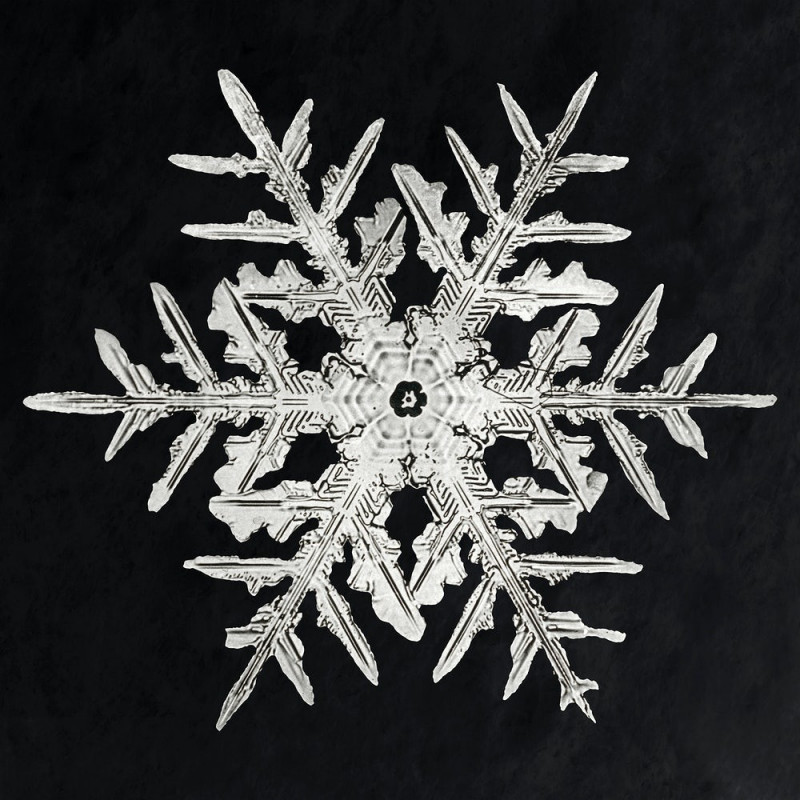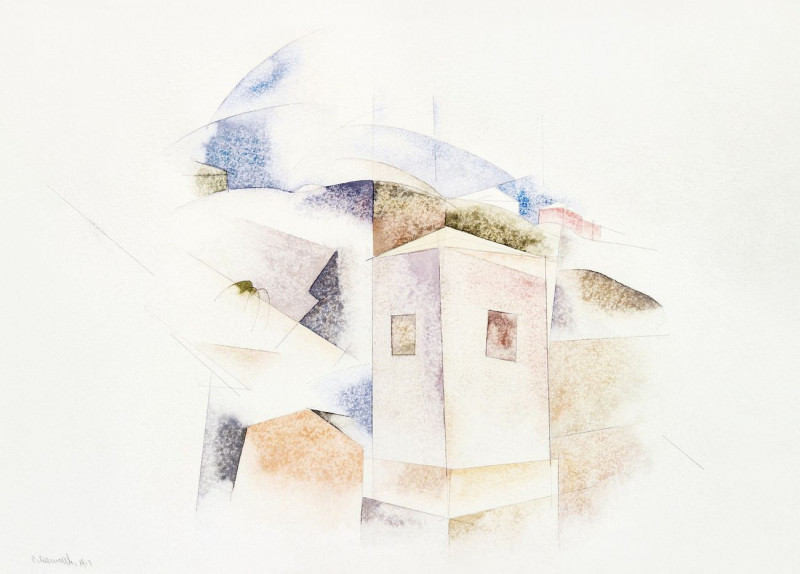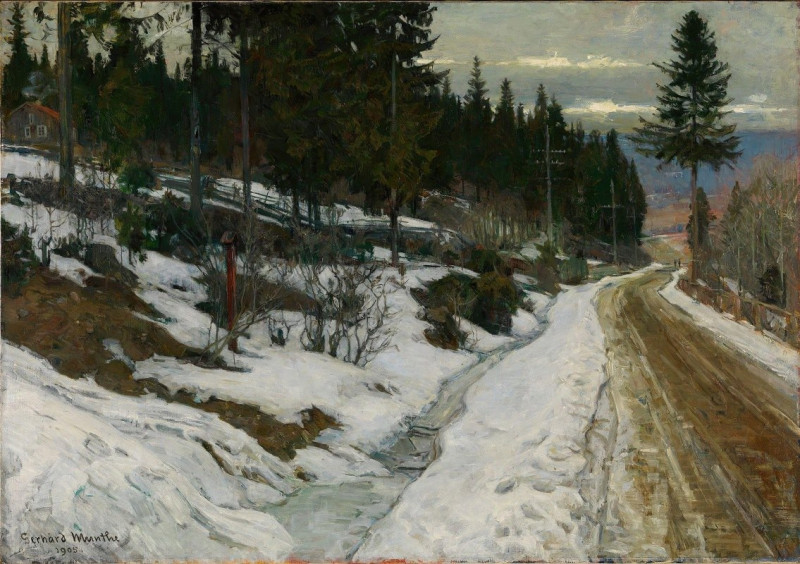La Maison De Piette À Montfoucault ( 1874)
Technique: Giclée quality print
Recommended by our customers
More about this artwork
"La Maison De Piette À Montfoucault" is a captivating work by the French Impressionist painter Camille Pissarro, dated 1874. This painting showcases Pissarro's delicate and harmonious approach to landscape painting, a testament to his mastery in capturing the essence of rural life and natural surroundings.The artwork presents a serene view of a rustic house partially obscured by lush trees, under a broad, softly clouded sky. The composition is centered around this traditional stone building with a prominent chimney, nestled comfortably within the embrace of nature. The surrounding landscape is lush, painted in varying shades of green, punctuated by the gentle yellows and browns of early autumn.Two figures, likely local villagers, are subtly integrated into the landscape, adding a human element to the scene without overshadowing the tranquility of the setting. They are portrayed in simple attire, blending harmoniously with the natural environment, and suggesting a symbiotic relationship between the inhabitants and their land.Pissarro’s brushwork is loose and impressionistic, allowing the viewer to sense the movement of the trees in the breeze and the softness of the cloudy sky. This painting not only captures a moment but also evokes the peaceful, rhythmic qualities of rural life at the time.
Delivery
Returns
Blessed are they who see beautiful things in humble places where other people see nothing. — Camille Pissarro
Camille Pissarro (1830-1903) was born on St.Thomas (now the US Virgin Islands) to a Portuguese father and a Dominican mother. He went to Paris to study art at Ecole des Beaux-Arts. He was an early pioneer of pointillism and neo-impressionism and later became a mentor of many famous impressionist painters including Cezanne, Manet, Renoir, and Gauguin. His paintings depicted rural and urban French landscapes and lifestyle. Many of his works politically captured images of peasants and laborers. Today, he is considered the father of impressionism.

































